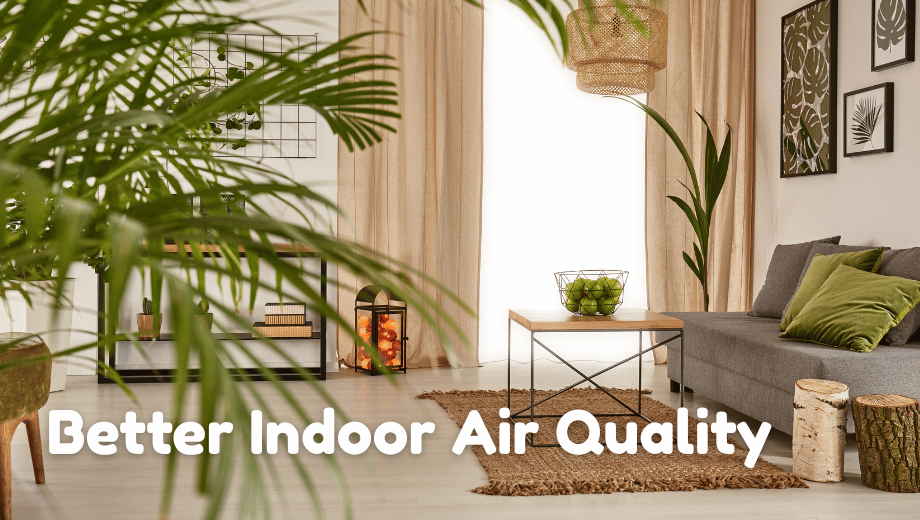Your home should be a sanctuary—a place that nurtures your well-being—yet many of us overlook how profoundly our living environment affects our health. At the heart of a healthy home lies indoor air quality, silently influencing everything from sleep quality to immune function. What’s easy to miss is how our daily routines—cooking dinner, wiping down counters, or bringing home new furniture—constantly reshape the air we breathe inside our four walls.
Understanding Indoor Air Quality: Why It Matters
Indoor air quality (IAQ) encompasses the condition of air within and around buildings, particularly as it relates to occupant health and comfort. With the average person spending roughly 90% of their time indoors, the significance of this air becomes clear. Common culprits degrading indoor air include dust particles, pet dander, mold spores, volatile organic compounds (VOCs) emanating from paints and furnishings, and residual chemicals from household cleaners.
The consequences of poor indoor air extend beyond mere discomfort. Research links substandard air quality to a spectrum of health issues—from relatively minor complaints like headaches and unexplained fatigue to more serious conditions including severe allergic responses, worsened asthma symptoms, and respiratory infections. These effects hit hardest among vulnerable groups: young children, the elderly, and those with existing health conditions.
Key Takeaway: Even modest adjustments to your home environment can substantially improve the quality of air you breathe daily.
Essential Strategies for a Healthier Home
Prioritize Ventilation and Airflow
Think of ventilation as your home’s respiratory system—it expels stale, contaminated air and draws in fresher outdoor air. This natural exchange dramatically reduces indoor pollutant levels. Practical approaches include creating cross-breezes by opening windows on opposite sides of your home when weather permits, running bathroom and kitchen exhaust fans during and after activities that generate moisture or odors, and investigating whole-house ventilation options for newer, tightly-sealed homes.
In contemporary construction, energy recovery ventilators (ERVs) have become increasingly common. These systems exchange indoor and outdoor air while preserving temperature and humidity conditions—effectively improving air quality without sacrificing energy efficiency.
Manage Humidity for Comfort and Health
Maintaining humidity levels between 30% and 50% strikes the sweet spot for both comfort and health in most homes. Excess moisture creates breeding grounds for mold and dust mites, while overly dry conditions can irritate respiratory passages, worsen existing breathing problems, and even damage wooden furnishings and instruments.
A basic hygrometer offers an affordable way to monitor humidity throughout your living spaces. Consider the real-world case of a family in the Pacific Northwest who battled persistent mold problems for years. After implementing a comprehensive moisture management plan—strategically placing dehumidifiers, enhancing ventilation, and addressing hidden water leaks—they saw remarkable improvements in both their home’s air quality and their respiratory health.
Reduce and Control Indoor Pollutants
Taking deliberate steps to minimize indoor contaminants can transform your home’s air quality:
- Opt for low-VOC or zero-VOC paints, finishes, and cleaning solutions
- Vacuum regularly with HEPA-filtered machines that trap rather than redistribute particles
- Launder bedding weekly in hot water to eliminate dust mites and allergens
- Implement a no-shoes policy indoors to prevent tracking in outdoor pollutants
Both the American Lung Association and Environmental Protection Agency highlight these practices as cornerstones of maintaining healthy indoor environments.
Incorporate Natural Air Purifiers
While their impact is more subtle than mechanical systems, certain indoor plants can help filter air. Species like peace lilies, snake plants, and spider plants have demonstrated some capacity to remove specific airborne chemicals. When adding plants to your home, ensure proper care to prevent mold growth in soil, and consider potential allergic sensitivities some family members might have to particular varieties.
Smart Tools and Technologies for Cleaner Air
Today’s homeowners benefit from an array of technologies designed to enhance indoor air quality. Air purifiers equipped with true HEPA filtration can capture up to 99.97% of airborne particles as tiny as 0.3 microns—including common allergens, dust, and many pollutants. Consistent HVAC maintenance, particularly replacing filters every 1-3 months depending on usage and household conditions, ensures your system runs efficiently while effectively filtering circulating air.
For those in arid climates or during winter heating season, a humidifier can maintain comfortable moisture levels, benefiting both respiratory health and wooden furnishings. Conversely, dehumidifiers prove essential in humid regions to prevent moisture-related problems like mold proliferation.
Everyday Habits for Sustained Air Quality
Consistent cleaning routines form the backbone of ongoing air quality management. Dusting with microfiber cloths that capture particles rather than sending them airborne, vacuuming with HEPA-filtered equipment, and regularly washing bedding and soft furnishings all contribute significantly to cleaner indoor air.
Consider scaling back on scented candles, commercial air fresheners, and heavily fragranced products, which often release VOCs and can trigger reactions in sensitive individuals. Pet owners should maintain regular grooming schedules and consider designating certain areas—particularly bedrooms—as pet-free zones to better manage animal-related allergens.
Daily Air Quality Checklist:
* Create a 15-30 minute fresh air exchange by opening windows (weather permitting)
* Use exhaust fans during and after cooking and showering
* Wipe down high-touch surfaces to reduce dust accumulation
* Monitor and adjust humidity levels as seasonal conditions change
Building a Healthier Home for the Long Term
Creating a healthier home environment doesn’t demand radical lifestyle overhauls or costly renovations. Instead, understanding the fundamentals of indoor air quality and implementing thoughtful, consistent practices leads to meaningful improvements over time. Whether you’re managing humidity levels, enhancing ventilation, selecting less toxic household products, or establishing regular cleaning habits, each step contributes to a living space that better supports your health.
Take a moment to evaluate your own home environment and identify one or two changes you can implement this week. Your respiratory health—and overall well-being—will benefit from this investment in cleaner, healthier indoor air.




